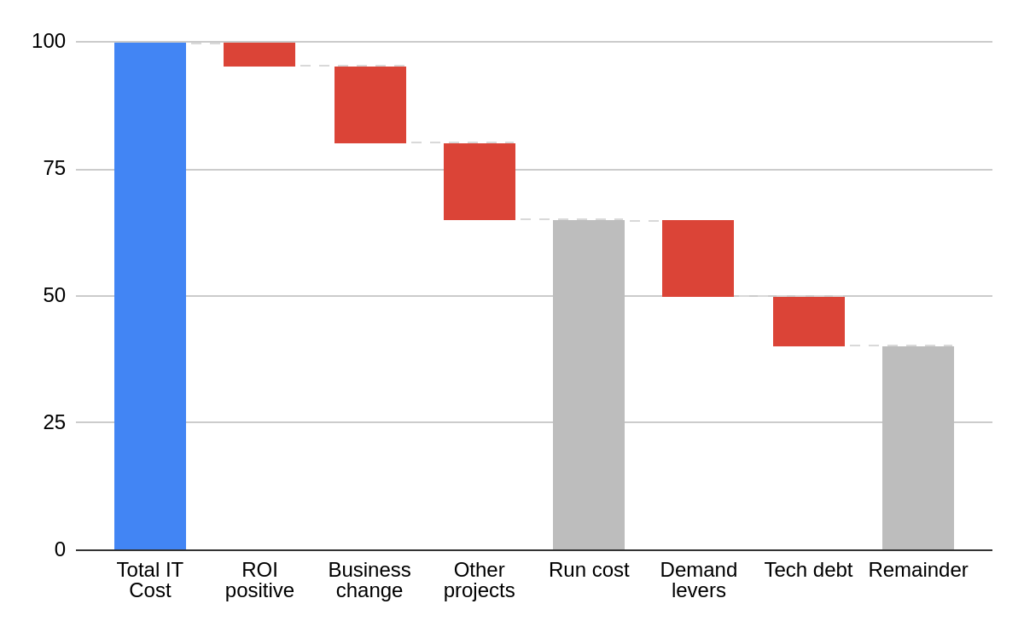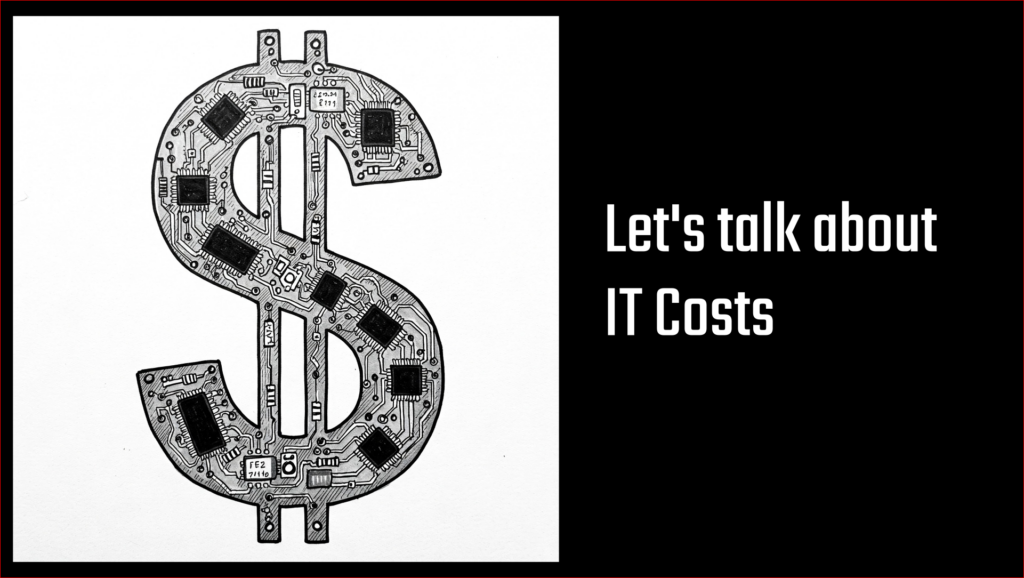Most architects are excited to talk about innovation, strategy, business partnership and long term roadmaps and only few are motivated to talk about a very boring topic – such as IT cost. From my point of view this is a mistake that quite often is a major roadblock for a productive discussion.
If we take a consumer packaged goods (CPG) company as an example. They are working in a highly competitive industry, maybe beverages, food or something similar. If the company does not have a strong brand, a 3% EBIT margin is quite common in this industry. At the same time the IT cost as a percentage of revenue are quite often around 1%. So saving IT costs can be an attractive lever to improve the topline and the profitability of the company.
An architect that does not want to discuss about the cost side can come across as a child that wants to go shopping for toys without doing the homework first. Quite often working on the cost topic is about “earning the right to play” and discuss more “interesting” topics.
This is my list of 10 cost-related questions that you should be able to answer (not only as an architect):
- What percentage of your IT cost create an ROI not only on paper but on the P&L?
- How much of the IT cost is driven by direct business demands regarding change?
- How much of the IT run costs can be influenced by the business?
- How much do you invest to manage tech debt?
- How are your costs distributed across capability domains?
- How much do you spend on differentiating capabilities vs. commodity?
- How does your IT cost compare to the industry’s average and lower quartile?
- How does the quality of your output (e.g., velocity, website NPS, STP ratios, …) compare with competition?
- What would be necessary to decrease costs by 10, 20 or 30%?
- What would be the benefit of increasing costs by 10, 20, 30%?
Let’s start to unpack these one by one.
What percentage of your IT cost create an ROI not only on paper but on the P&L?
Tracking the return of investment, the ROI of IT projects is a quite common practice. The project owner promises some kind of improvement and then the project gets approved and implemented.
The interesting question is what happens after the implementation of the project. Is someone from finance asking the project owner for the savings? Are they maybe directly deducted from the budget? Chasing IT investments that are not expenses but are investments that are paying off within a few years is critical. This is also the part of the IT cost that on one in the business should be worried about. It is an investment just like the investment in goods, plants or new facilities.
How much of the IT cost is driven by direct business demands regarding change?
After the bucket of cost positions with a clear ROI the next position are the ones that might not have a clear ROI but that are directly linked to the requirements of the business for transformational or change efforts. The characteristic of these costs is that they could be reduced with relative ease. If the business does not require that new website, IT won’t build it and the costs can be saved.
Depending on the ratio of internal and external co-workers there might be restructuring costs involved if the change is large and comes with a short notice but other than that there is a lot of flexibility in this area.
How much of the IT run costs can be influenced by the business?
So far we have mainly focused on the “Change” part of the budget. Quite often business stakeholders feel that they don’t have any levers to influence the remaining budget. This is however not always true. Most of the time it will require a more detailed analysis and some selected deep dives but then one could offer stakeholders also possibilities within their decision power to reduce the run budget:
Reducing the service levels and/or reducing co-workers on higher service levels is an obvious lever. How many people in the department really need the iPad and their Laptop? How many users need a license to edit reports in the BI solution vs. only viewing them?
This tradeoff sometimes involves conscious risk taking. In a retail company for example your ability to sell and make money depends on a reliable internet connection. One way is to increase service levels and have redundant network connections – but one could also factor in the outage risk and see if there is a positive case for reducing redundancies.
Over the last years technology has replaced manual processes in a lot of areas. While this most of the time has a positive payback there are also cases – especially in geographies with low labor cost – where it might make sense to save IT cost by replacing the fancy automation with a few people conducting the same task.
How much do you invest to manage tech debt?
To close the circle to the articles about tech debt in the last weeks if you can quantify the amount of the budget spend on tech debt`s “interest rate” this is another lever one should separate from the rest of the budget.
Summary of part 1
As this article is getting already quite long I will continue with number 5 to 10 in the next one and summarize the transparency from the numbers one to four.
Plotting the different buckets as a waterfall chart could look something like this:

With a chart like this one can turn a Turkish Bazar cost negotiation into a real strategy exercise.
Rather than only discussing about “the benchmark” (more on that in the next part) the business stakeholders are empowered to take decisions and to take action on the IT cost.
While there is the “Remainder” and the “Other projects” that business stakeholders can’t really influence around half of the overall budget could be influenced by them:
- They could stop projects that do not have a strong ROI
- They could replace automation projects with manual processes
- They could reduce their run demand, like service levels and usage
- They could invest together with IT in a reduction of tech debt to address these costs
Will they do so? Not very often. But creating this transparency and providing opportunities for business stakeholders to co-own the IT cost and influence them is an important exercise in stakeholder management and an excellent foundation for more strategic discussions.
That’s it for part 1 of this 2-part series. In the next article I will address the remaining topics.

Pingback: Let’s talk about IT Costs – part 2 – Enterprise Architecture